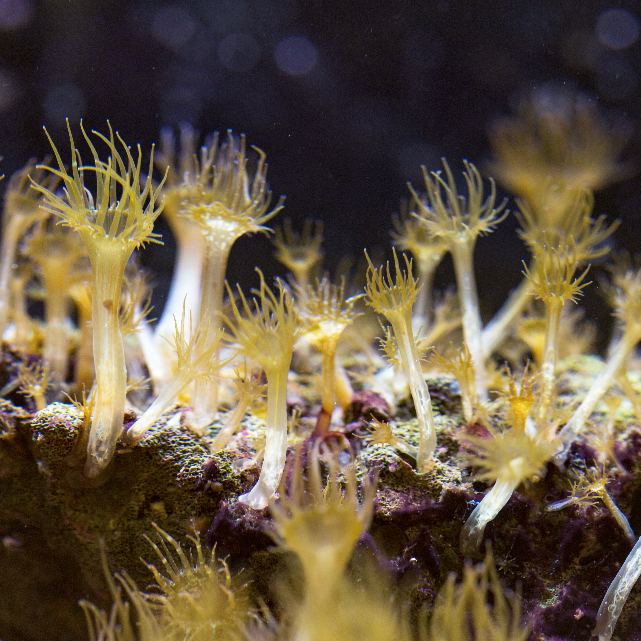
What is Aiptasia?
Aiptasia are also known as glass anemones or rock anemones. Rather than one unique species of anemone, Aiptaisa is actually a complete genus of anemones consisting of seventeen different species. They typically grow no bigger than one inch wide and no taller than two inches. Their colouration is a brown pink hue.
They will normally enter your tank by hitchhiking on new live rock or corals introduced to your reef tank. They can be difficult to spot and are excellent at concealing themselves and can live in their burrows for extended periods of time before revealing themselves, by which time it’s too late as they are already spreading around your tank.
One of the trickiest aspects of this pest, is that it is not easy to remove by hand, and doing so can cause it to fragment and multiply even further. Aiptasia can rapidly spread throughout a reef tank, and so once identified, should be dealt with to remove it and ensuring that future outbreaks don’t happen.
Why should I get rid of it?
While not only spreading around your tank like a virus taking up space on rocks, Aiptasia can deliver a nasty sting to any corals within it’s vicinity. The toxin is very powerful and rivals the most venomous corals found in a reef tank. Once hit by this toxin, it can be powerful enough to damage a neighbouring coral beyond return.
Which livestock will eat Aiptasia?
Peppermint Shrimp – This is a very effective method especially if you can get hold of the L. wurdemanni variety. They are relatively cheap, and the only downside is that they have been known to eat soft corals when they are very hungry, but this is rare and can be avoided by adding a little extra sinking fish food.
Berghia Nudibranch – The Berghia verrucicornis variety of nudibranch loves eating Aiptasia and is typically reef safe. This fascinating sea slug is a popular choice for tackling Aiptasia and is often added to a tank in numbers, tank size permitting.
Filefish – The Acreichthys tomentosus is well known for eating Aiptasia. It is a relatively shy fish but can be agressive towards other Filefish and also sometimes smaller fish. Best suited for larger tanks, the Filefish if very hungry is known to also eat corals, so keeping this fish well fed is key.
Copperband Butterfly Fish – This fish is known to eat Aiptasia, but also is known to eat a variety of other reef tank inhabitants including a variety of clams, anemones, inverts and even feather dusters. So, extra caution is advised when considering these fish.
Hermit Crabs – These inverts are cheap and easy to introduce to reef tanks of any size and are a very popular members of a clean-up-crew. Success though is not guaranteed, as they may or may not eat Aiptasia. But, a good first choice to try as they are cheap and have many other benefits to a reef tank even if they don’t eat your Aiptasia.
Alternative methods to killing Aiptasia
Lemon Juice – By carefully injecting Aiptasia with lemon juice, it will normally kill it. A tricky method though, as it can be tricky to do, and if scared, the Aiptasia will shrink back and hide. Also, if the Aiptasia is too small it can be virtually impossible to inject.
Hydrogen Peroxide – Similarly used the same way as lemon juice, injecting Aiptasia with Hydrogen Peroxide should also kill it. Care must be taken though as excessive amounts of Hydrogen Peroxide can harm your reef tank.
Red Sea Aiptasia-X – There are a few shop-bought products available, red Sea Aiptasia-X is probably the best-known and easiest method if you don’t want to go down the livestock route.
